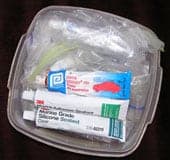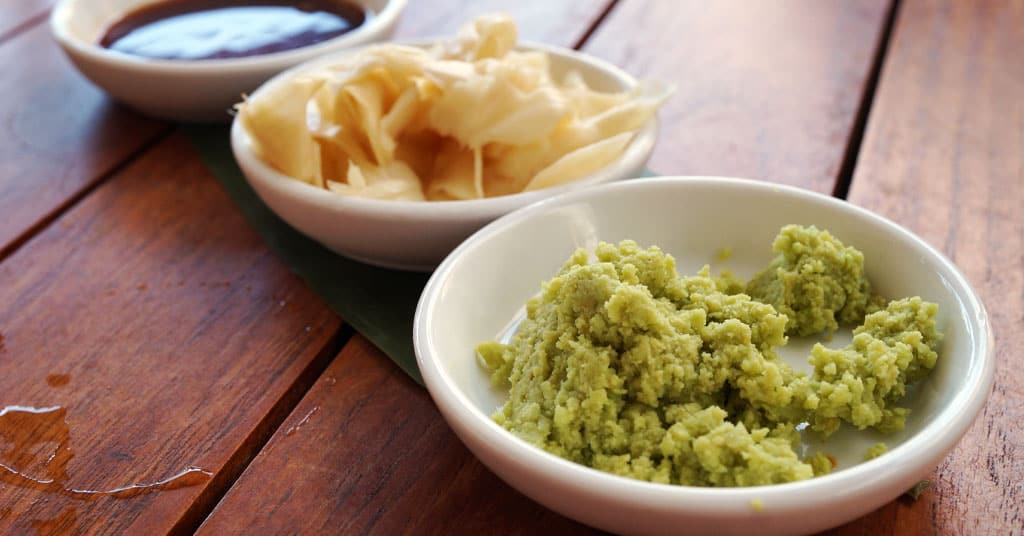You may be surprised to read that I’m suggesting two things to store in the boat refrigerator. Especially since I’ve written before about how to reduce what you store in the refrigerator. I’ve even written a whole book on Storing Food without Refrigeration (available in our store or on Amazon) to reduce what you keep in the boat fridge.
But these two items become useless if they’re not kept cool. If you’re cruising in temperate climates, you may not find it necessary to store these items in the refrigerator. But in a tropical summer, it can make all the difference. And once you’re bought something, you want to be able to use it, right?
So what are these two things to store in the boat refrigerator or risk them going bad? They might surprise you.
Wasabi/Horseradish
One of the first things that we learned is that when wasabi gets warm, it quickly loses its bite. It doesn’t just degrade slightly. It tastes like sawdust. Ditto for horseradish, although it has a slightly longer shelf life outside the refrigerator.
Regardless of whether you use powder or paste, both wasabi and horseradish need to be stored in the refrigerator if they are to be stored for any time at all. That means even if you have not yet opened the container.
Also beware of buying any wasabi or horseradish that’s in stores without air conditioning!
Sealants
When you’re in the middle of a repair job a rock hard tube of sealant is a nuisance. This is especially true when you’re a day or more from a hardware store. A couple of times, we even found unopened tubes had gone off. To say that we were not happy would be an understatement.

Once we began storing the sealants in the refrigerator, we found that we could easily keep them six months or more. It worked even once we opened them (of course, we made sure they were tightly re-sealed). A dot of petroleum jelly on the tip before adding the cap will keep it from sticking closed.
On our first boat, our refrigerator had one corner that was awkward to get to. We put all the little tubes in a plastic box with a lid and stuck it back in there. They don’t need to be in a particularly cold section of the refrigerator. And you don’t want them up against a chill plate where they could freeze (freezing is generally bad for sealants).
I also stuck several of the large tubes (like you use with a caulk gun) behind our drink storage bins.
On our current boat, there’s one oddly shaped door shelf that nothing really fits on . . . except sealant tubes. Perfect!
Even with storing the sealants in the refrigerator, I recommend checking all of them before leaving a major port if you’re going to be in places where you can’t get more. We always made sure we had several fresh tubes on board before we left La Paz to spend summer in the Sea of Cortez. And we tried to buy from air conditioned stores. That is, unless we knew we were going to use the product immediately. When possible, lightly squeeze the tube before buying to make sure that the contents are still good.
And, I always pass on the wisdom of other cruisers. So here’s one bonus item that you might need to make room for in your boat fridge.
Bonus Item to Store in the Boat Refrigerator
Cruiser Diane Dashevsky discovered the hard way that heat and humidity and “melt” some medications. She suggested putting daily meds in a weekly pill organizer (Amazon). Then store the bulk of medications in their original containers in a lock and lock container (Amazon) in the fridge. I wrote about storing medication onboard. And wrote another post on special considerations for diabetics who need to keep insulin and test strips.
Storing only what you need in the refrigerator leaves more room. And storing things there that fail without refrigeration can save you money and hassles.
Related Posts

Carolyn Shearlock has lived aboard full-time for 17 years, splitting her time between a Tayana 37 monohull and a Gemini 105 catamaran. She’s cruised over 14,000 miles, from Pacific Mexico and Central America to Florida and the Bahamas, gaining firsthand experience with the joys and challenges of life on the water.
Through The Boat Galley, Carolyn has helped thousands of people explore, prepare for, and enjoy life afloat. She shares her expertise as an instructor at Cruisers University, in leading boating publications, and through her bestselling book, The Boat Galley Cookbook. She is passionate about helping others embark on their liveaboard journey—making life on the water simpler, safer, and more enjoyable.
Simplify meal prep on board with proven strategies for provisioning, maximizing fridge space, and cooking delicious meals aboard your boat.










Carolyn Shearlock says
Thanks so much for adding that . . . see Diane’s great way for storing the meds so they DON’T melt:
Storing Medications